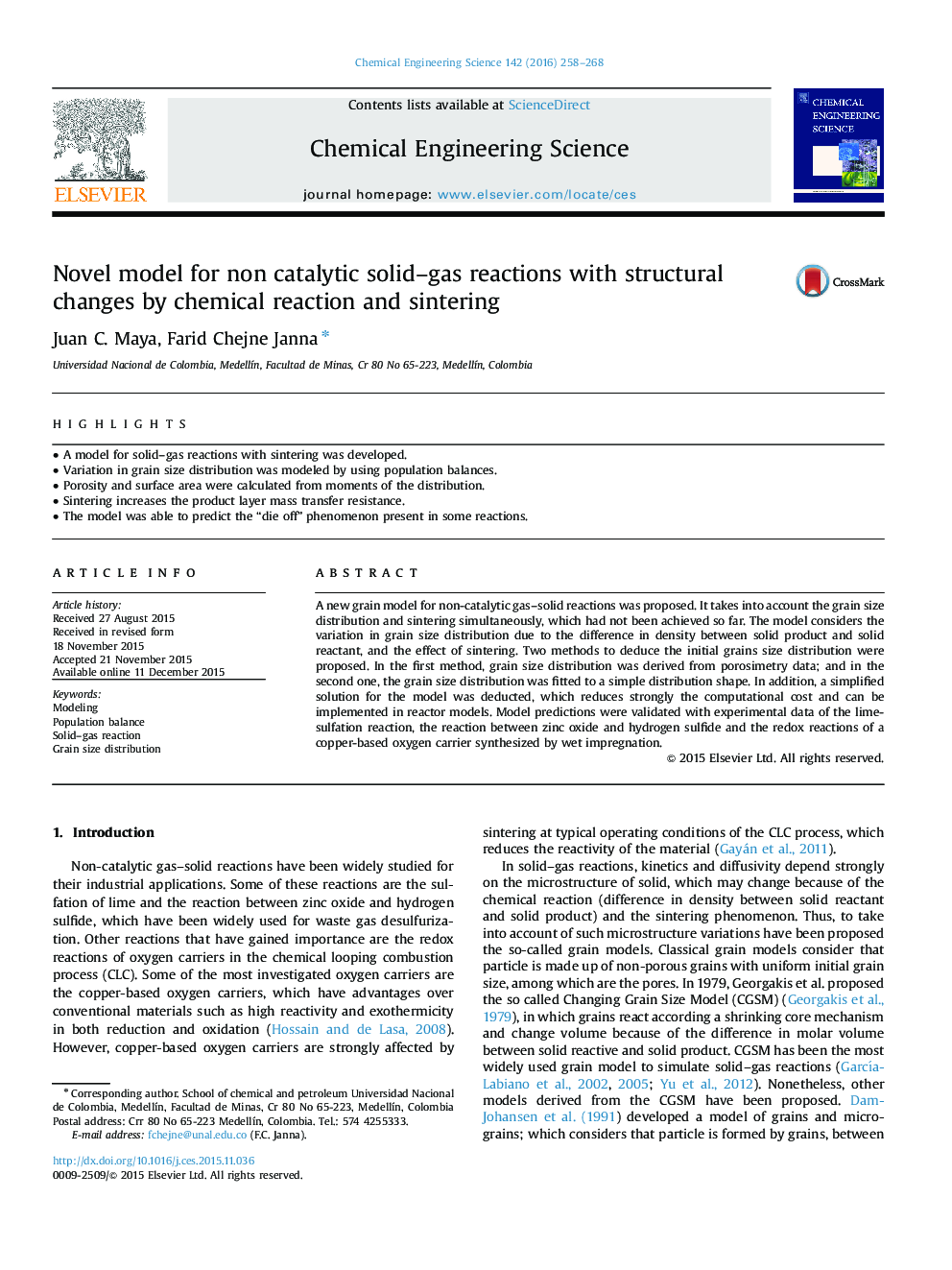| Article ID | Journal | Published Year | Pages | File Type |
|---|---|---|---|---|
| 154426 | Chemical Engineering Science | 2016 | 11 Pages |
•A model for solid–gas reactions with sintering was developed.•Variation in grain size distribution was modeled by using population balances.•Porosity and surface area were calculated from moments of the distribution.•Sintering increases the product layer mass transfer resistance.•The model was able to predict the “die off” phenomenon present in some reactions.
A new grain model for non-catalytic gas–solid reactions was proposed. It takes into account the grain size distribution and sintering simultaneously, which had not been achieved so far. The model considers the variation in grain size distribution due to the difference in density between solid product and solid reactant, and the effect of sintering. Two methods to deduce the initial grains size distribution were proposed. In the first method, grain size distribution was derived from porosimetry data; and in the second one, the grain size distribution was fitted to a simple distribution shape. In addition, a simplified solution for the model was deducted, which reduces strongly the computational cost and can be implemented in reactor models. Model predictions were validated with experimental data of the lime-sulfation reaction, the reaction between zinc oxide and hydrogen sulfide and the redox reactions of a copper-based oxygen carrier synthesized by wet impregnation.
